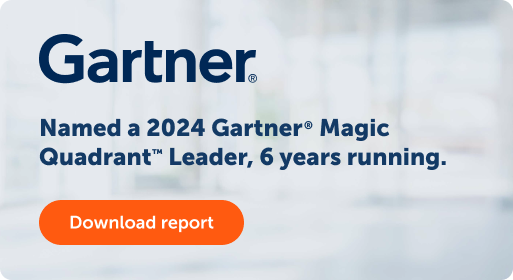- Products
Automate any process, anywhere Streamline complex, mission-critical workflows with the Agentic Process Automation System. Explore the Platform Explore the Platform
- AI System
- Build AI Agents
Automate advanced tasks with AI Agent Studio.
- Streamline workflows
Rapidly design and deploy with Automator AI.
- Process complex documents
Extract and organize data with Document Automation.
- Discover opportunities
Identify inefficiencies with Process Discovery.
- Orchestrate automations
Centralize initiatives with Automation Workspace.
- Build AI Agents
- Automation System
- Govern programs
Establish frameworks and oversight with CoE Manager.
- Automate from any app
Get AI-powered assistance with Automation Co-Pilot.
- Speed workflows with cloud
Power instant data exchange with serverless Automation Anywhere Cloud Service
- Unify systems
Connect applications and workflows with seamless integrations.
- Govern programs
- View all Products
-
- Solutions
Featured Solutions
 Google Cloud Google Cloud and Automation Anywhere empower enterprises to fast-track their AI + Automation journey. Google Cloud
Google Cloud Google Cloud and Automation Anywhere empower enterprises to fast-track their AI + Automation journey. Google Cloud Amazon Web Services Streamline workflows, reduce costs, and make automating even easier when you combine the Automation Success Platform with AWS Amazon Web Services
Amazon Web Services Streamline workflows, reduce costs, and make automating even easier when you combine the Automation Success Platform with AWS Amazon Web Services- By Industry
- By Function
- By Technology
- View all AI Solutions
-
- Resources
Get Community Edition: Start automating instantly with FREE access to full-featured automation with Cloud Community Edition.
Featured
 Named a 2024 Gartner® Magic Quadrant™ Leader for Automation. Celebrating Six Years of Recognition as a Leader. Download report Download report
Named a 2024 Gartner® Magic Quadrant™ Leader for Automation. Celebrating Six Years of Recognition as a Leader. Download report Download report - Customers
New & improved certifications
 Give yourself a competitive advantage with Automation Anywhere's industry-recognized certifications.Explore Certifications Explore Certifications
Give yourself a competitive advantage with Automation Anywhere's industry-recognized certifications.Explore Certifications Explore Certifications - Company
Get in touch with us Get help, know more, learn, ask questions, or just say Hi! Contact Us Contact Us
- Get To Know Us
- Announcements
- Society
-
Blog
Could Hyperautomation Be a Name for AI Plus RPA?
Navigate to content

Gartner named “hyperautomation” as the top strategic technology trend for 2020. But what is hyperautomation, and why is it important?
Simply put, hyperautomation is the realization that empowering Robotic Process Automation (RPA) to automate complex processes requires advanced technologies such as natural language processing (NLP), vision, speech, deep learning, reinforcement learning, predictive analytics, and more. Hyperautomation could be another way to say RPA plus artificial intelligence (AI).
Whereas RPA is software robots, or bots, that mimic human actions, AI is concerned with simulating human intelligence by machines. The integration of the two enables end-to-end business process automation and delivers greater impact.

RPA and AI separately went through big adjustments and improvements since their introductions. Eventually, RPA got saturated by solving structured business processes. AI, on the other hand, became limited, especially in enterprises, by providing only point solutions and not necessarily solving end-to-end problems.
However, RPA solutions enhanced with AI are able to handle both semi-structured (invoices, purchase orders, and contracts) and unstructured data (free-flow text, voice recordings, and images). The technologies needed to make sense of unstructured data include, but are not limited to, natural language understanding (NLU), NLP, natural language generation (NLG), voice to text, image processing, and more — which all are branches of AI.
Why hyperautomation?
Hyperautomation basically highlights how the integration of RPA and AI can not only overcome the limitations of each technology on its own, but also open new horizons to solve big problems. Auto insurance claims processing, for example, is a lengthy and painful process, but RPA plus AI can solve it in a few minutes, quickly evaluating fraud or damage and approving or rejecting claims.

Who should care about hyperautomation? Everyone. Customers interested in digital transformation receive value from hyperautomation. For automation providers, it’s the next source of investment and development. For tech and AI providers, it means a new venue, and an important one, to deliver solutions.
For consumers, it means less pain when dealing with different enterprise applications and processes. Hyperautomation is also important for the general market as it opens more opportunities and enables RPA and AI to solve more issues.
Hyperautomation use cases
Which sector will gain the most from hyperautomation? Undoubtedly, all sectors will benefit from implementing the technology.
Consider customer service, a common pain point in many industries, such as banking, insurance, healthcare, and retail. AI plus RPA (hyperautomation) can help all parties by using NLP to understand customer intentions and extract necessary information, using NLG to summarize the knowledge base, and using RPA to perform tasks faster, more efficiently, and more reliably.
Large manufacturing plants deal with many original equipment manufacturers (OEMs), which means a diverse set of invoices — sometimes up to tens of thousands of them. Hyperautomation provides efficient ways to read the invoices and make on-time payments.
In healthcare, hyperautomation can even gather information about a patient and schedule an appointment that not only fits the clinic’s schedule, but also the patient’s.
How to implement hyperautomation
RPA is a platform that can be used to deliver hyperautomation. The integration of AI point solutions is key here. The Automation Anywhere Enterprise RPA platform makes it easy to package AI solutions and deliver them either on the platform or on the marketplace (Bot Store).
Some of these solutions are already packages of RPA. The cognitive platform Document Automation is one example. It enables RPA to understand semi-structured and unstructured processes.
Just as AI and RPA combined are solving lengthy and complex insurance claims processes, they can be used to solve many more societal issues. The sky is the limit when it comes to hyperautomation.
Learn more about the benefits
of RPA with no limits.
About Marzieh Nabi
Marzieh Nabi is a senior product manager of cognitive automation solutions at Automation Anywhere and a member of the board of directors at work2future Foundation.
Subscribe via Email View All Posts LinkedInGet to know the Automation Success Platform.

For Students & Developers
Start automating instantly with FREE access to full-featured automation with Cloud Community Edition.



